19 Sep Folk to Fashion – managing sizing issues.
The beauty of this Folk to Fashion zero-waste pattern is that you can select your fabric width to determine different sizing outcomes in the final garment. And the length of your available fabric will determine the final length of your garment and sleeve. This garment is an historic pattern called a Eura, believed to be worn as an undergarment around 500-1,000 AD.
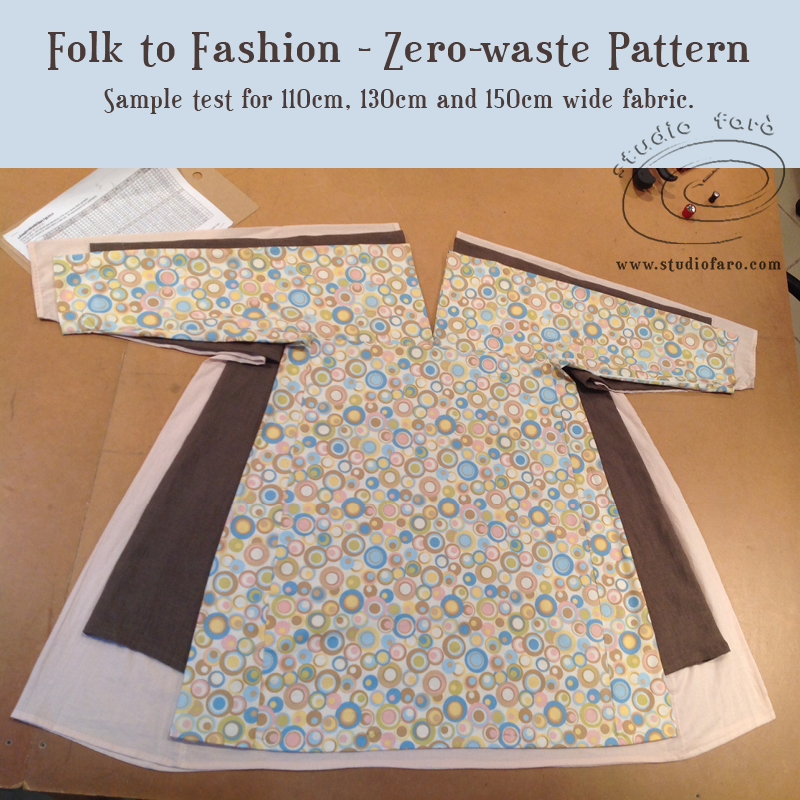
Because the original idea for this folk design is based on a proportional breakdown of available cloth, there are a number of variables between garments made with different widths in fabric. In the table below I’ve made a detailed garment specification for the Folk to Fashion Tunic, made in three different width fabrics. I’ve also added an approximate Australian Size as a guide for you to decide which width fabric you should be using to make your own tunic. The variation in the sleeve length of the Cotton/Linen sample is a result of only having just over 1 m of fabric.
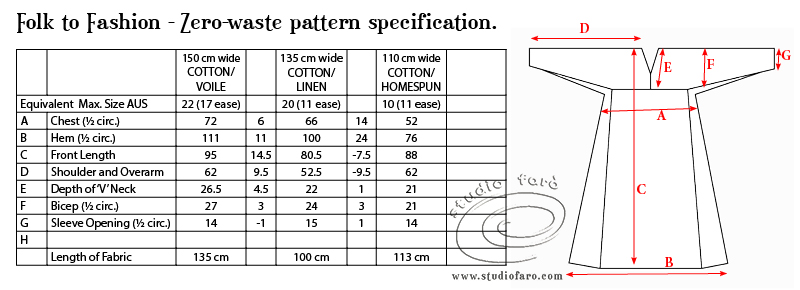
In conclusion, the width of fabric will determine the maximum size you’re able to achieve when making your garment.

The chart tells us that fabric around 110cm (44″) wide will only make garments to fit small women/men or teenagers. The image above is the garment made from fabric 110cm wide, placed on a AUS Size 8 workroom dummy.
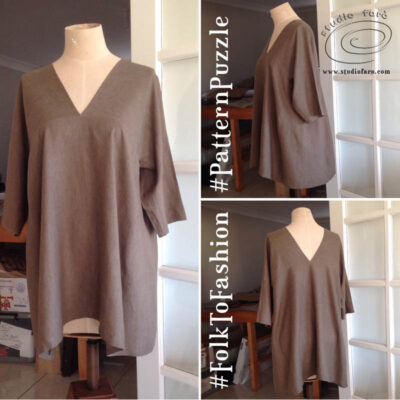
When you have fabric that is 135-140 cm wide you’ll be able to make a garment that will fit up to Australian Size 20 (Bust = 120cm/47″). I’m currently Aus Size 14 and my sample is a wonderful loose fit, totally suited to our summers. It is tunic length (mid-thigh) and ideal over leggins or jeans.
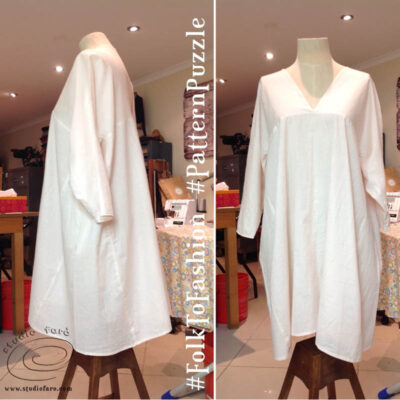
Fabric that is 150cm wide will make a garment that will fit up to Size 24 (Bust = 133cm/52-53″). I have a garment made in cotton voile from fabric at this width and again it’s a wonderful loose fit and fabulous around the house on hot summer days. The ‘V’ neck is low so I either wear a camisole underneath or stitch the ‘V’ a little higher to suit my own level of modesty.
The final length of your garment will be determined by the piece of fabric you’re working with. The position of the horizontal line in the above pattern diagram, determines the length of the body of the garment and the length of the sleeve. I consider the length of the body of the garment to be my first consideration. You can use the garment measurement chart above to calculate the width of your sleeve determined by the width of your fabric (E – depth of ‘V’ neck). The variation between the different fabric widths is not that great (26.5/22/21). Then using a tape measure you can work out the ideal length of your garment by allowing for the ‘V’ neck measurement.
If you’d like some guidance for sewing your Eura together, you’ll find it all here in my post Folk to Fashion – First Sample.
If you’d like to go through the detail of the original draft you’ll find all the information in the original post – Folk to Fashion – Zero Waste. If you have any questions don’t hesitate to use the comments section below.
Take this moment to sign up for my fabulous newsletter! Every month or so I send an email newsletter with new website content and always, always an enormous discount code for all my sewing patterns, garment blocks and pattern making instructions.
This discount code is for subscribers only. Don't miss out!

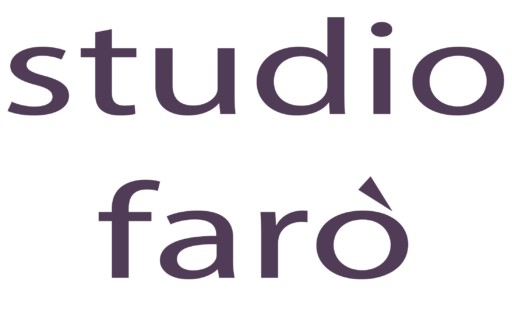
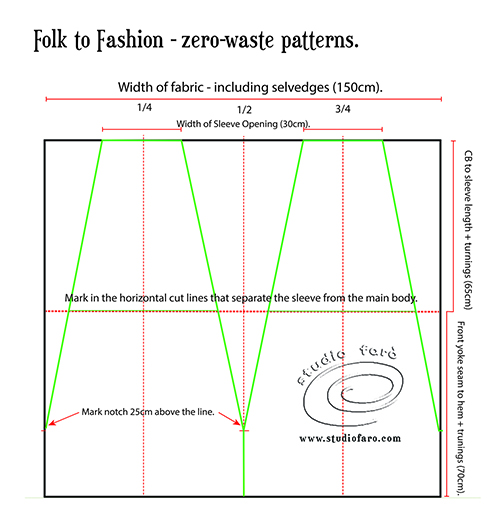
No Comments